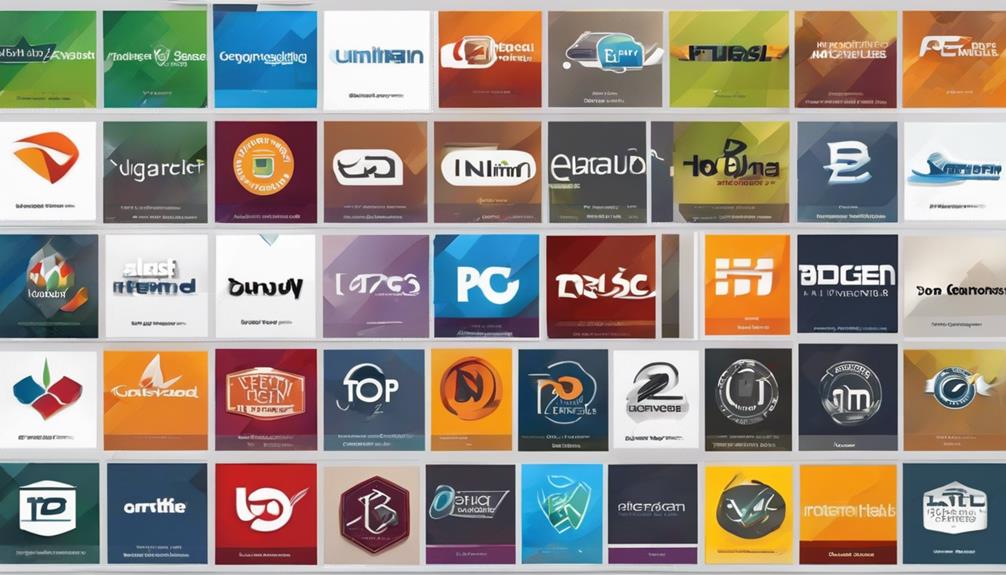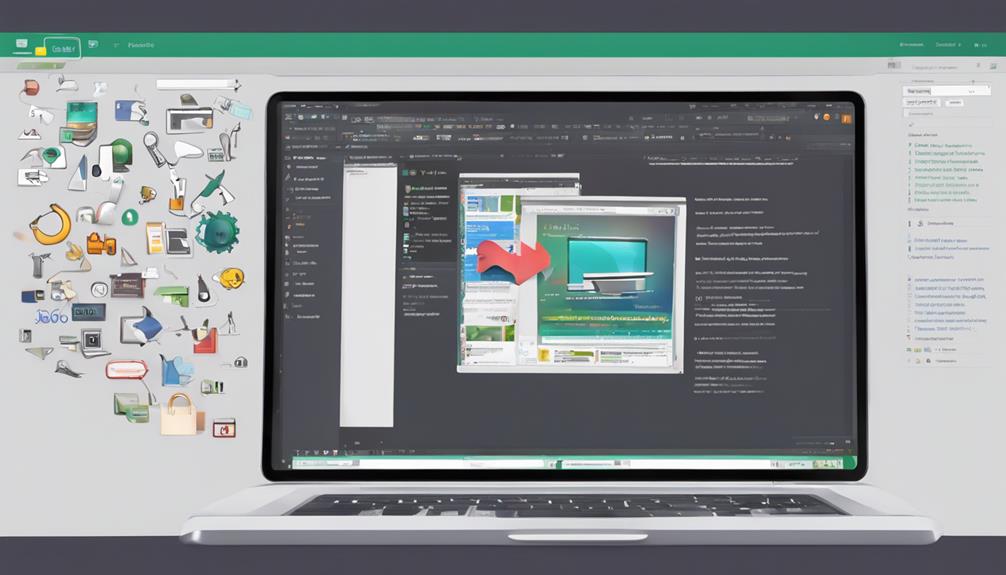When considering the benefits of HTML conversion, you might be surprised at the profound impact it can have on your website. From improved accessibility to enhanced user experience and better SEO ranking, the benefits are compelling. But there’s more to uncover beyond just these surface-level advantages. Stay tuned to discover how HTML conversion can revolutionize the way your website operates and engages with your audience.
Improved Accessibility
When you convert your content to HTML format, you are enhancing its accessibility in significant ways. HTML conversion ensures that your content meets accessibility standards, making it easier for users with disabilities to access the information. By incorporating features like alt text for images, semantic structure for headings, and proper labeling of form elements, you are ensuring that all users can navigate and understand your content.
Moreover, HTML conversion leads to user interface improvements that further enhance accessibility. The structured nature of HTML allows for a more organized layout, making it easier for users to interact with the content. Additionally, HTML provides a foundation for responsive design, ensuring that your content is accessible across various devices and screen sizes.
Enhanced User Experience
To enhance user experience, HTML conversion plays a crucial role in optimizing the functionality and presentation of your content. By converting your content into HTML format, you can significantly improve website functionality and enhance user engagement. HTML allows for the creation of responsive and interactive elements on your website, making it easier for users to navigate through your content seamlessly.
One key benefit of HTML conversion is the enhancement of website functionality. HTML provides a solid foundation for building dynamic web pages with features like multimedia integration, forms, and animations, which can enrich the overall user experience. Additionally, HTML enables compatibility across different devices and browsers, ensuring a consistent experience for all users.
Moreover, HTML conversion contributes to increased user engagement by creating visually appealing and user-friendly interfaces. With HTML, you can optimize the layout and design of your content, making it more attractive and engaging for visitors. This, in turn, can lead to higher user interaction and better retention rates on your website.
Better SEO Ranking
For achieving a better SEO ranking, HTML conversion is a fundamental step in optimizing your website for search engines. By converting your website to HTML, you can enhance keyword optimization and improve your backlink strategy, both crucial elements for boosting your search engine visibility.
Keywords optimization plays a vital role in SEO ranking. With HTML conversion, you can strategically place relevant keywords throughout your website’s content, meta tags, and image descriptions. Search engines rely on these keywords to understand the relevance of your website to user queries, ultimately influencing your ranking on search engine results pages.
Additionally, HTML conversion enables you to implement a robust backlink strategy. Backlinks are links from other websites that direct users to your site. Search engines view backlinks as indicators of your website’s credibility and authority. By converting your website to HTML, you can optimize these backlinks effectively, further enhancing your SEO ranking.
Cross-Browser Compatibility
Ensuring cross-browser compatibility is crucial for maintaining a consistent user experience across different browsers and devices. By converting your content to HTML, you can optimize it to display correctly on various platforms, enhancing usability. This compatibility not only improves user satisfaction but also helps in achieving better SEO rankings.
Browser Consistency Importance
Maintaining browser consistency is a crucial aspect of HTML conversion, particularly when it comes to ensuring cross-browser compatibility. In the realm of web design and user interface, the importance of browser consistency cannot be overstated. When a website is converted to HTML, it is essential to ensure that the layout, styling, and functionality remain consistent across different web browsers such as Chrome, Firefox, Safari, and Internet Explorer.
Failure to achieve browser consistency can result in a poor user experience, with elements of the website displaying incorrectly or not functioning as intended on certain browsers. This can lead to frustration for users and may even drive them away from your website. By converting your website to HTML and ensuring browser consistency, you can enhance the user experience, increase engagement, and ultimately improve the overall performance of your site. Remember, a seamless user experience across all browsers is key to the success of your online presence.
Enhanced User Experience
Consistent cross-browser compatibility is imperative for ensuring an enhanced user experience when it comes to HTML conversion. Achieving this compatibility ensures that your website or application functions smoothly across different browsers, providing a seamless experience for all users. Here are three key reasons why cross-browser compatibility is crucial for enhancing user engagement and visual appeal:
- Uniform Experience: Cross-browser compatibility ensures that your website looks and functions the same regardless of the browser used. This consistency creates a seamless experience for users, reducing frustration and increasing engagement.
- Expanded Reach: With cross-browser compatibility, your website can reach a wider audience. Users accessing your site from various browsers will have a positive experience, leading to increased traffic and user engagement.
- Enhanced Visual Appeal: Consistent rendering across browsers maintains the visual integrity of your website, ensuring that your design elements, images, and layout are displayed as intended. This visual consistency enhances the overall appeal of your site, making it more attractive and engaging to users.
Mobile-Friendliness
When you convert your content to HTML, you ensure it is mobile-friendly, providing users with an optimal viewing experience on various devices. This enhancement not only caters to a wider audience but also boosts your website’s SEO performance by meeting mobile-friendly criteria set by search engines. Ultimately, the combination of improved user experience and enhanced SEO can lead to increased visibility and engagement for your website.
Improved User Experience
With the increasing use of mobile devices for browsing the internet, ensuring mobile-friendliness has become a crucial aspect of web development. When you convert your content to HTML to enhance user experience, you can significantly improve how your website functions on mobile devices. Here are three key ways HTML conversion can enhance mobile-friendliness and boost user experience:
- Responsive Design: HTML conversion allows for the implementation of responsive design elements, ensuring that your website adapts seamlessly to various screen sizes and orientations on mobile devices.
- Improved Navigation Structure: By converting your content to HTML, you can optimize the navigation structure for mobile users, making it easier for them to find what they are looking for quickly and intuitively.
- Faster Loading Times: HTML conversion can streamline the code of your website, resulting in faster loading times on mobile devices, which is crucial for providing a smooth and enjoyable user experience.
Enhanced SEO Performance
To further optimize your website beyond improved user experience, focusing on enhancing SEO performance, particularly in the realm of mobile-friendliness, is imperative. SEO optimization plays a crucial role in ensuring that your website ranks well in search engine results. With the majority of internet users now accessing websites via mobile devices, having a mobile-friendly website is essential for SEO success.
Mobile-friendliness not only enhances user experience but also impacts website indexing by search engines like Google. Websites that are mobile-responsive tend to perform better in search results, as search engines prioritize mobile-friendly websites in their rankings. By converting your website to HTML and ensuring mobile responsiveness, you improve the chances of your site being indexed properly and appearing higher in search results. This, in turn, drives more organic traffic to your website, increasing visibility and potential conversions. In today’s digital landscape, prioritizing mobile-friendliness is key to unlocking the full potential of your SEO efforts.
Faster Loading Time
Experience significant improvements in website performance with HTML conversion. By optimizing your website’s performance, image, and content delivery, you can ensure faster loading times for your visitors. Here are three key ways HTML conversion can help speed up your website:
- Performance Optimization: HTML conversion streamlines your website’s code, making it cleaner and more efficient. This optimization reduces unnecessary elements that can slow down loading times, resulting in a faster and smoother user experience.
- Image Optimization: Converting your website to HTML allows for better image optimization techniques. By compressing images without sacrificing quality, you can significantly reduce file sizes and loading times, enhancing overall performance.
- Content Delivery and Caching Strategies: HTML conversion enables you to implement effective content delivery networks and caching strategies. By storing website data closer to users and temporarily saving frequently accessed content, you can reduce loading times and improve website speed, enhancing the overall user experience.
Easy Maintenance
For website owners and developers, easy maintenance is a crucial aspect of managing a successful online presence. When you convert your website to HTML, you benefit from simplified content organization. HTML allows you to structure your content effectively, making it easier to update and manage. By organizing your content in a logical manner, you can ensure that visitors can easily navigate your site and find the information they need.
In addition, HTML conversion enhances file storage efficiency. HTML files are lightweight and easy to store, reducing the strain on your server. This streamlined file storage not only improves loading times but also simplifies maintenance tasks. With HTML, you can easily locate and update specific files without sifting through complex databases or directories.
Improved Security
When you convert documents to HTML format, you benefit from enhanced data protection measures. HTML conversion allows for secure document transfer, ensuring that sensitive information remains safe during transmission. This process also provides an added layer of protection against potential breaches, safeguarding your data from unauthorized access.
Enhanced Data Protection
With HTML conversion, enhanced data protection is achieved through improved security measures. When converting documents to HTML format, you benefit from enhanced data protection features that help safeguard your sensitive information. Here are three key ways HTML conversion enhances data protection:
- Data Encryption: HTML conversion allows for the implementation of robust data encryption techniques, ensuring that your documents are securely transmitted and stored. Encryption helps prevent unauthorized access to your data, maintaining its confidentiality and integrity.
- Privacy Compliance: By converting documents to HTML, you can easily ensure compliance with privacy regulations and standards. HTML conversion tools often come with features that help you adhere to privacy laws, such as GDPR or HIPAA, by enabling secure handling and storage of personal data.
- Access Control: HTML conversion enables you to set up access controls for your documents, limiting who can view, edit, or share the content. This granular control enhances data protection by preventing unauthorized users from accessing sensitive information.
Secure Document Transfer
Securely transferring documents is a critical aspect of data management in today’s digital landscape. With HTML conversion, you can ensure enhanced security through document encryption and secure file sharing. Document encryption involves converting the content into a code that can only be decoded by authorized parties, preventing unauthorized access during transfer. This process adds an extra layer of protection to your sensitive information, safeguarding it from potential cyber threats.
Moreover, HTML conversion enables secure file sharing, allowing you to transfer documents safely across different platforms and devices. By converting documents to HTML format, you can easily share them without compromising their integrity or security. This streamlined process ensures that your files remain protected throughout the transfer, reducing the risk of data breaches or unauthorized access.
Incorporating document encryption and secure file sharing through HTML conversion not only enhances data security but also provides peace of mind knowing that your sensitive information is being transferred safely and securely.
Protection Against Breaches
To enhance data security and protect against breaches, implementing HTML conversion offers a robust solution. By converting documents to HTML format, you can benefit from improved security features that safeguard your information from unauthorized access and cyber threats.
Here are three key ways HTML conversion enhances protection against breaches:
- Data Encryption: HTML conversion allows you to encrypt your data, ensuring that sensitive information is secure and only accessible to authorized users. This encryption helps prevent unauthorized individuals from intercepting and understanding the content of your documents.
- Cybersecurity Measures: HTML conversion incorporates advanced cybersecurity measures such as firewalls, password protection, and secure authentication protocols. These measures add layers of defense against potential breaches and ensure that your data remains safe from malicious attacks.
- Secure File Sharing: HTML conversion enables secure file sharing by providing options for password-protected links, restricted access, and expiration dates for shared documents. This ensures that only intended recipients can view and interact with the content, reducing the risk of breaches through unauthorized sharing.
Higher Conversion Rates
Implementing HTML conversion can significantly contribute to higher conversion rates on your website. By optimizing your content for conversion and enhancing user engagement through HTML features, you can attract more visitors and convert them into customers more effectively.
Conversion optimization is a key aspect of HTML conversion that focuses on improving the user journey and encouraging desired actions. Through HTML formatting, you can create clear, structured content that guides users towards conversion points, such as calls-to-action and contact forms. This streamlined approach enhances the user experience and increases the likelihood of conversions.
Moreover, HTML allows for interactive elements and multimedia integration, which can boost user engagement. By incorporating videos, animations, and interactive forms, you can capture visitors’ attention and keep them engaged with your content. This heightened engagement can lead to increased conversions as users are more likely to interact with your website and take the desired actions.
Greater Scalability
For achieving greater scalability with HTML conversion, it is essential to streamline your website’s structure and design to accommodate growth and increased traffic efficiently. HTML conversion offers various scalability advantages that can help your website expand seamlessly. Here are three key points to consider:
- Flexible Architecture: By converting your website to HTML, you can create a more flexible and adaptable architecture. This allows for easier integration of new features and functionalities as your website grows.
- Improved Load Times: HTML-converted websites often have optimized code and faster loading speeds. This improvement in performance can handle increased traffic without compromising user experience, enhancing your site’s growth potential.
- Scalable Hosting Solutions: HTML conversion enables easier integration with scalable hosting solutions. This means that as your website attracts more visitors, you can quickly adjust your hosting resources to meet the demand, ensuring a smooth user experience during periods of high traffic.
Frequently Asked Questions
How Can HTML Conversion Benefit Small Businesses Specifically?
HTML conversion benefits small businesses by providing cost savings through streamlined processes. It increases visibility online, improves accessibility for all users, and enhances the overall user experience. Implementing HTML can give your business a competitive edge.
Will HTML Conversion Affect My Website’s Existing Design and Layout?
When converting to HTML, a compatibility check ensures your website’s existing design and layout are preserved. HTML conversion should maintain the original structure and appearance, ensuring a seamless transition without compromising the overall look and feel.
Is HTML Conversion a One-Time Process or an Ongoing Task?
HTML conversion is not a one-time task. It requires a long-term commitment to maintenance. Continuous updates and optimization are essential to keep your website running smoothly and up-to-date with the latest standards and technologies.
Can HTML Conversion Help With Improving Website Performance Metrics?
Improving website speed and SEO, HTML conversion can enhance user experience and accessibility. By optimizing code and structure, it boosts performance metrics. Speedier loading times and better rankings await, making your site more user-friendly.
Are There Any Potential Drawbacks or Challenges With HTML Conversion?
When considering HTML conversion, you may encounter technical difficulties and compatibility issues. These challenges require careful planning and testing to ensure a smooth transition without disrupting website functionality or user experience.



